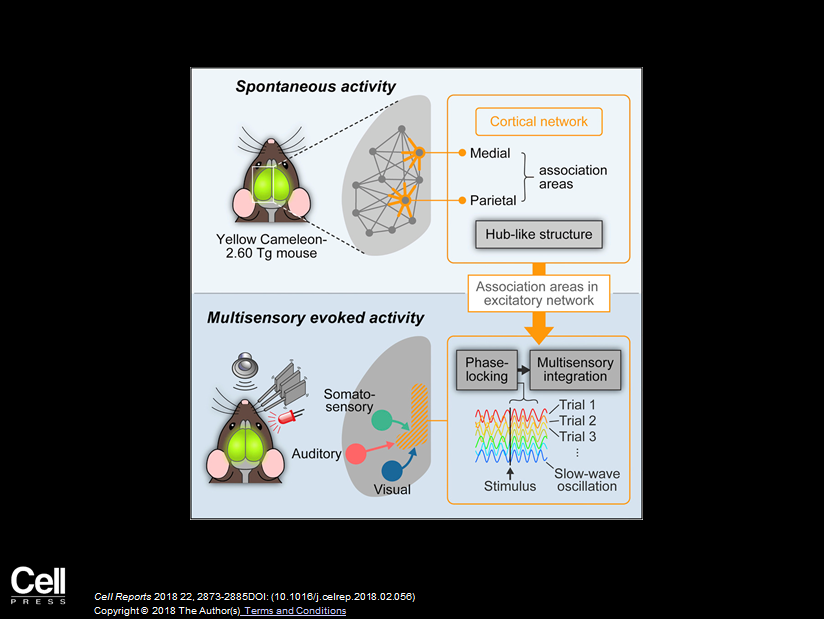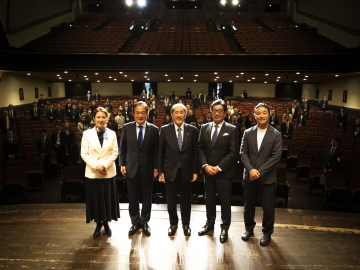A research team which included Professor Toshio Ohshima of Waseda University discovered a new kind of neural response to multisensory stimulation in the cerebral cortex. Their study was published online in Cell Reports on March 14, 2018.

In daily life, the human brain is constantly and simultaneously processing multiple sensory information, such as the visual, auditory, and somatosensory stimulation. By integrating multiple sensory information, perception becomes quick and precise. Though neural responses to multisensory stimulation in most areas of the brain have been reported, how these areas coordinate to integrate information was unclear.
In the study, wide-field calcium imaging was used to examine the overall activities of the cerebral cortex. Wide-field calcium imaging is a technique which enables simultaneous observations of cortical network activities of specific cell types in a wide range. However, observations of a small number of cell types, such as inhibitory neurons, were difficult due to weak signal strength.
To obtain more liable signals while eliminating noise signals, the team engineered genetically modified mice based on the fluorescence resonance energy transfer (FRET) sensor known as yellow cameleon (YC) 2.60, a calcium-sensitive fluorescent protein, expressed in selective excitatory and inhibitory neurons. They then performed cell-type-specific, wide-field FRET-based calcium imaging to visualize cortical network activities induced by multisensory inputs.
As a result, they observed that spontaneous slow waves formed balanced neuronal hubs in association cortical areas, and that multisensory stimulation triggered rapid phase-locking mainly of excitatory hub activity persisting for seconds after the stimulation offset. This implies that association cortex tends to form balanced excitatory networks that configure slow-wave phase-locking for multisensory integration.
In the future, the team expects to reveal how phase locking affects behaviors and learning processes of individuals, and how it coordinates with other regions of the brain. Additionally, because abnormalities in the integrated function of multisensory information are closely linked to developmental disorders, they hope their research will contribute to understanding the mechanism of and finding a cure for developmental disorders.
Reference
- Excitatory Neuronal Hubs Configure Multisensory Integration of Slow Waves in Association Cortex
- Published in Cell Reports on March 13, 2018
- Authors: Satoshi Kuroki, Takamasa Yoshida, Hidekazu Tsutsui, Mizuho Iwama, Reiko Ando, Takayuki Michikawa, Atsushi Miyawaki, Toshio Ohshima, Shigeyoshi Itohara
- DOI: 10.1016/j.celrep.2018.02.056








